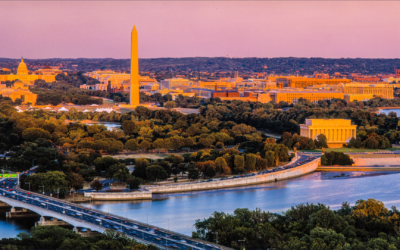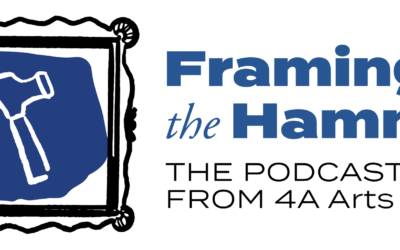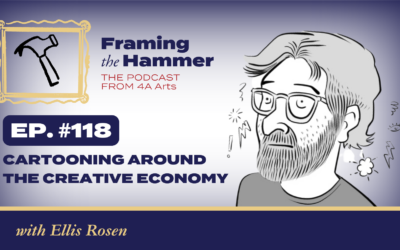The Canary in the Coal Mine, Part 2
Imagine walking into your local library and finding the doors locked–not for renovation, not for a snow day–but permanently. Imagine your kids’ school canceling the theater program, or your town’s outdoor summer concert series shutting down for good. Imagine flipping through the radio and finding only talk shows, angry shouting, and ads–no classical music, no storytelling, no thoughtful reporting from NPR.
That’s not some dystopian future. It’s what’s beginning to happen across the country right now.
In the past month alone, the federal government has cut millions of dollars in grants from the National Endowment for the Arts (NEA), stripped funding from NPR and PBS, and pushed to overhaul the Voice of America, a longstanding public news outlet, accusing VoA of being “radical,” and claiming that Big Bird is somehow “biased media.” These changes weren’t debated publicly or voted on by Congress. They were delivered through executive orders and silent budget line items; easy to overlook, easy to ignore, but with consequences that affect every American, red state or blue.
This isn’t about whether you like modern art or go to the ballet. This is about how we tell our national story–who gets to tell it, and who gets silenced.
The Disappearance of Local Culture
The NEA doesn’t fund elite galleries in New York City the way some imagine. It helps keep community theaters open in Alabama. It helps veterans’ art therapy groups in Montana. It supports mariachi music programs in Texas schools, and Native art preservation in tribal communities across the Dakotas. In 2023, NEA grants reached all 50 states, most congressional districts, and more than 16,000 towns and cities.
And neither does gutting the NEA affect the average American’s pocketbook or tax return. Its meager $207 million in appropriations in 2024 literally registers on the national budget’s website as costing U.S. taxpayers 0% of our budget. Each working American adult* spends only $1.54 each year in support for the NEA, but those contributions bankroll almost the entirety of federal funding for the arts, especially in rural areas.
But now, many of those grants have been canceled. Some organizations got the news by email, with no warning, no recourse, and no backup plan.
Already, the Birmingham Children’s Theatre is facing closure. A 76-year-old Pioneer Playhouse, Kentucky’s longest-running outdoor theater in rural Danville, Kentucky, faces immense cuts that will affect its ability to continue its collaboration with the nearby Northpoint Training Center, a medium-security prison where inmates used theater to develop social skills and self-esteem that led to more successful returns to society.
Artist and director Annie Dorsen has created a crowd-sourced tracker to allow concerned parties to track NEA cuts in real time. As of Friday, May 9, it includes over 440 canceled grants from Connecticut to Kansas, Alaska to Arizona.
These aren’t just budget cuts. They’re the erasure of places where people gather, connect, and imagine something better together.
* Employed, between the ages of 18-64
What's Being Lost
Art isn’t decoration. It is reflection. It tells us who we are, what we’ve survived, and what’s worth fighting for. It teaches children to speak up. It helps veterans process trauma. It brings people together who might not otherwise share a room.
And when governments start stripping that away–especially without public debate–it’s time to ask why.
Historically, the answer is simple: control the story, and you control the people.
History Doesn't Repeat, But It Rhymes
When authoritarian regimes rise, whether from the left, right, or somewhere else entirely, one of the first things they do is go after the arts.
They do this not because paintings or poetry are dangerous on their own, but because creativity is where free thinking begins. Dictators don’t fear oil paint. They fear what happens when people see their world clearly, and start imagining something better.
In the 1930s, Nazi Germany staged exhibitions of so-called “degenerate art,” mocking modern works and replacing them with state-sanctioned images of purity, strength, and Aryan superiority. Artists were exiled or silenced. Museums were emptied. It started with cultural “realignment.” It ended in genocide.
In Francoist Spain, the authoritarian regime “used censorship as a powerful tool to control the information that came out in public, whether it was news, or parts of culture like movies, music, or theater, and to crush any resistance or dissent…[T]he common denominator was that the regime did not allow messages that could be seen by large parts of society and that were critical of the regime itself.”
In the Soviet Union, writers and painters who didn’t align with the Communist Party were censored, jailed, or worse. The only acceptable art was “Socialist Realism,” with its visions of smiling workers, bountiful fields, triumphant armies. The true reality, with its view of cinder block buildings, empty store shelves, and contraband American rock records and Levi jeans, was heavily suppressed.
The Past Becomes the Present
These examples may feel far removed from everyday American life, but examples of fascist control over arts and media are not limited to the past.
During the 1970s Khmer Rouge regime, Cambodia lost an estimated 90% of its intellectual elite, including artists, dancers, writers, and musicians. Its artistic ecosystem is still recovering.
In China during the Cultural Revolution, music, theater, and literature were tightly controlled. Folk traditions disappeared. Artists were publicly shamed, some sent to labor camps. Even today, Chinese artists who speak out against government policy are blacklisted or imprisoned.
In 2018–less than a decade ago–Cuba passed a number of decrees restricting artistic freedom, including Decree 349, which “essentially grants the Cuban Republic complete control over independent artistic production in the private sector,” and allows the government “to shut down concerts, performances, galleries, and art and book sales if they do not comply with the strict list of prohibited subject matter” and “restricts artists from commercializing their work without government approval.” Decree 349 also “requires all artists, musicians, and performers to gain permission from the Ministry of Cultural Affairs before any public or private performances and exhibitions
These countries’ shift to authoritarianism started, just like today in the United States, with budget cuts. With reorganizations. With the quiet reshuffling of leadership. With claims of “bias,” or “waste,” or “reform.”
A Nonpartisan Warning
This isn’t about left or right. It’s about whether we, as a country, will allow only one story to be told.
Many of the NEA grants canceled this year were awarded to organizations in conservative states. Public radio stations most affected by the cuts serve rural communities where commercial news outlets no longer reach. This isn’t just an urban, liberal issue. It’s a local, American issue.
When the arts are suppressed, everyone loses, conservatives and progressives alike. Because the minute you say, “this kind of story isn’t allowed,” it’s only a matter of time before your story isn’t, either.
Rewriting the Role of the NEA
There’s also reason to believe that this isn’t just about cutting funding. It’s about replacing it.
The White House’s recent statements have suggested that federal support for the arts may continue, but only for programming that aligns with new “patriotic” goals, including to “…celebrate the 250th anniversary of American independence, foster AI competency, empower houses of worship to serve communities, assist with disaster recovery, foster skilled trade jobs, make America healthy again,… [and]support the military and veterans.”
These goals may sound harmless. But when governments start funding only the stories they like, and silencing the ones they don’t, we’re no longer supporting the arts; we’re building a propaganda machine.
The same dynamic is unfolding at Voice of America, where mass firings and editorial shifts are turning what was once an independent global news source into a platform for White House-approved messaging. Voice of America is part of the United States Agency for Global Media, and was created in 1942 to promote the spread of democracy and counteract fascism and censorship across the globe.
We’ve seen this before. And we cannot afford to look away.
What We Stand to Lose; What We Can Still Save
This moment isn’t just about lost funding or canceled programs. It’s about what kind of country we want to live in.
Do we want a country where only one kind of story gets told? Where voices are filtered, history is edited, and culture is dictated from the top down?
Or do we want a country where your story–your community’s story–still matters?
Because the arts aren’t a luxury. They are how we grieve, how we celebrate, how we teach our children who they are. They are murals on main street, high school plays, fiddle festivals, gospel choirs, drag shows, comic books, quilt circles. They are not red or blue. They are human.
When we fund the arts, we invest in ourselves, not just in creativity, but in connection, memory, healing, and freedom.
If we dismantle that infrastructure–slowly, quietly–we won’t notice the damage all at once. But we will feel it. In our silences. In our divisions. In our inability to imagine a future better than the present.
The Arts Are a National Mirror
At their best, the arts hold up a mirror to society; not a flattering one, but an honest one. And in doing so, they remind us that democracy is not something we inherit. It’s something we build.
So if you’ve ever cared about a library, a local museum, a piece of music that made you feel understood, or a poem that helped you survive something hard, this is your moment.
If you care about being able to tell your own story, in your own words, you cannot be silent today.
Speak up. Show up. Support the storytellers.
Because if the canary in the coal mine goes silent, we don’t just lose the bird. We lose its song, and its message. And eventually, we lose ourselves.




